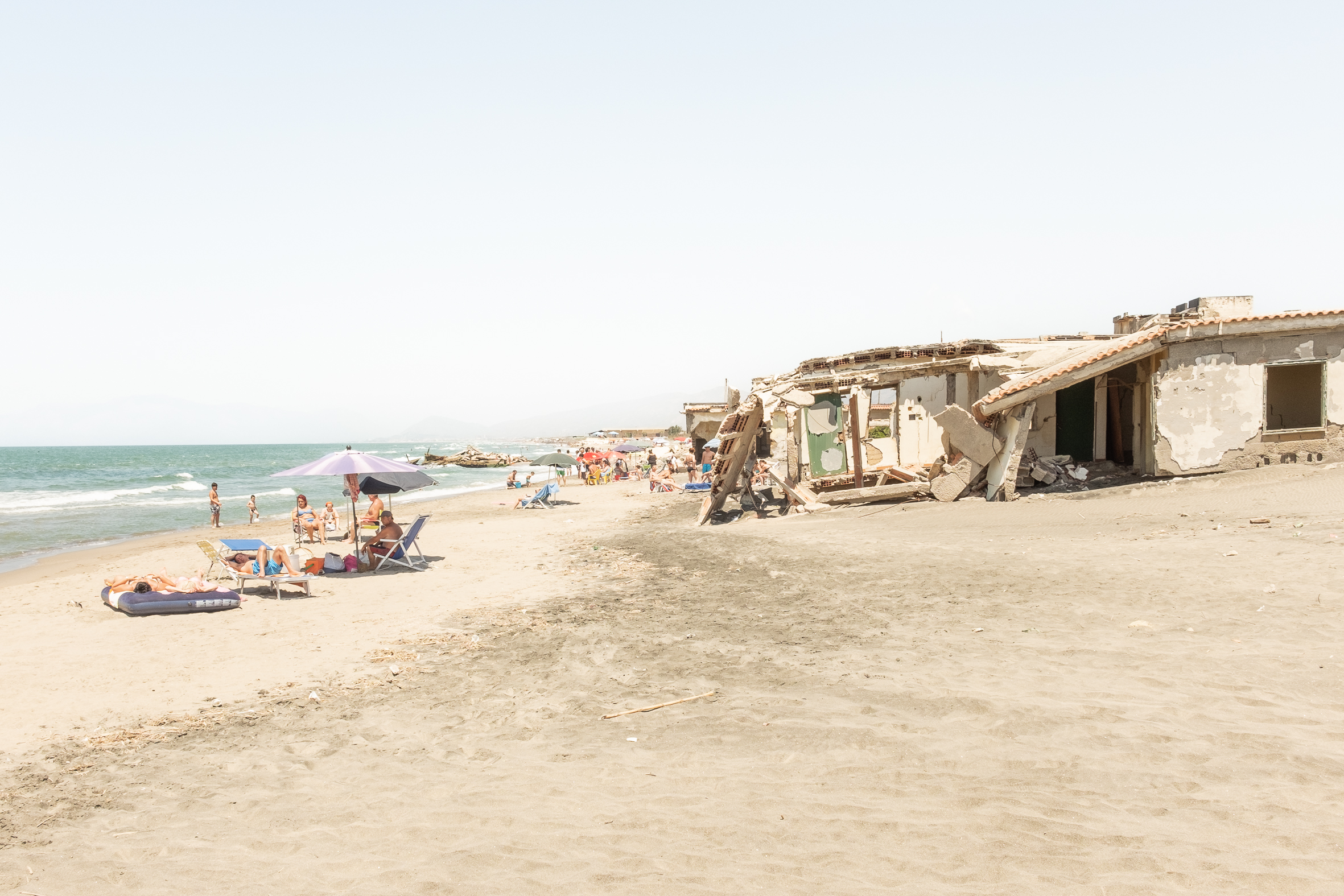
Collision course: Bagnara crumbling without care?
##plugins.themes.immersion.article.figure##

Abstract
«Collision is the crash, the impact between two bodies in motion» (Treccani, “Collisione”). In the landscape, movement characterises both the evolution of built parts and the mutability of natural parts, and new balances or new imbalances are defined starting from the possibility of recognising stable or unstable lasting arrangements. The intermediate areas between city and nature are the place of contact between the different modes and speeds of transformation of the natural and artificial components of the landscape. The contact between these components can be defined as an encounter or a collision, depending on the greater or lesser level of acceptance or rejection that is produced by the intersection.
The collision is therefore identified as an extreme figure for interpreting the relationship between different phenomena that is difficult to translate, with the same power, into a design theme. «In the passage from analysis to design, it seems that the term collision tends to lose its precision to some extent. Its descriptive power rarely goes beyond the level of metaphorical evocation to become an operational design tool» (Corbellini 2015, p.69).
In Bagnara - Castelvolturno, indiscriminate construction has come into collision with the uncontrolled power of the sea. In this coastal landscape of southern Italy between the Volturno river to the south and the Agnene canal to the north, the unstable balance between land and water has created a narrow sandy strip dotted with houses' ruins and inhabited by bathers. The lack of breakwaters leaves the sea currents free to erode the beaches; the presence of houses built illegally on state-owned land put the inner linear city beyond the boundaries of stability. The current landscape of Bagnara consists on the one hand of a sandy shore, with unique characteristics on the Campania coast, which acts as an unstable base for crumbling ruins, and on the other, the water swallows up shreds of buildings that become artificial rocks. The sinuous curves of the sandy and watery nature of Bagnara are juxtaposed with the rigid folds of buildings broken by the slow catastrophe.
A social and aesthetic practice, photography, understood with Olivier Lugon as a documentary art, explores this landscape, becoming tangible evidence of a reality in oblivion that presents a multifaceted and complex pathological dimension. Illuminating, revealing and disseminating the state of health of Bagnara is the only cure currently in place for this landscape. The photos, like a “caress on the world” of this unstable strip of land, provide a therapeutic practice and a poetic vision of the crumbling reality of Bagnara.
Cover image: Bagnara - Castelvolturno - Photo by Mario Ferrara
References
- Careri, Francesco, “Bagnasciuga urbani, oltre le città sedentarie.” In 40 parole per la cura della città. Lessico dei paesaggi della salute edited by Alessandra Criconia, Isotta Cortesi, Anna Giovannelli, 59-63. Macerata: Quodlibet, 2021.
- Cavanna, Pierangelo, “Luoghi comuni.” In Mario Ferrara. Campagna periurbana. Tra Napoli e Caserta, 10-11. Siracusa: LetteraVentidue Edizioni, 2022.
- “Collisione,” Treccani, accessed December 26, 2021, https://www.treccani.it/enciclopedia/collisione/
- Costantini, Paolo and Giovanni Chiaramonte, eds. Luigi Ghirri. Niente di antico sotto il sole. Scritti e immagini per un’autobiografia. Torino: SEI, 1997.
- McLain, Clutter, “Notes on Ruin Porn.” Avery Review no. 18 (October 2016), http://averyreview.com/issues/18/notes-onruin- porn.
- Lugon, Olivier. Lo stile documentario in fotografia. Da August Sander a Walker Evans (1920-1945). Milano: Electa, 2008.
- Nunes, João. “Landscape. Architecture.” AREA, no. 127 (March/April 2013): 18-25.
- Rondolino, Giovanni. Laszlo Moholy-Nagy. Pittura fotografia film. Torino: Martano 1975.